Slow Water is First to Harden
Glass, aluminum, hand-print, graphite, 2021
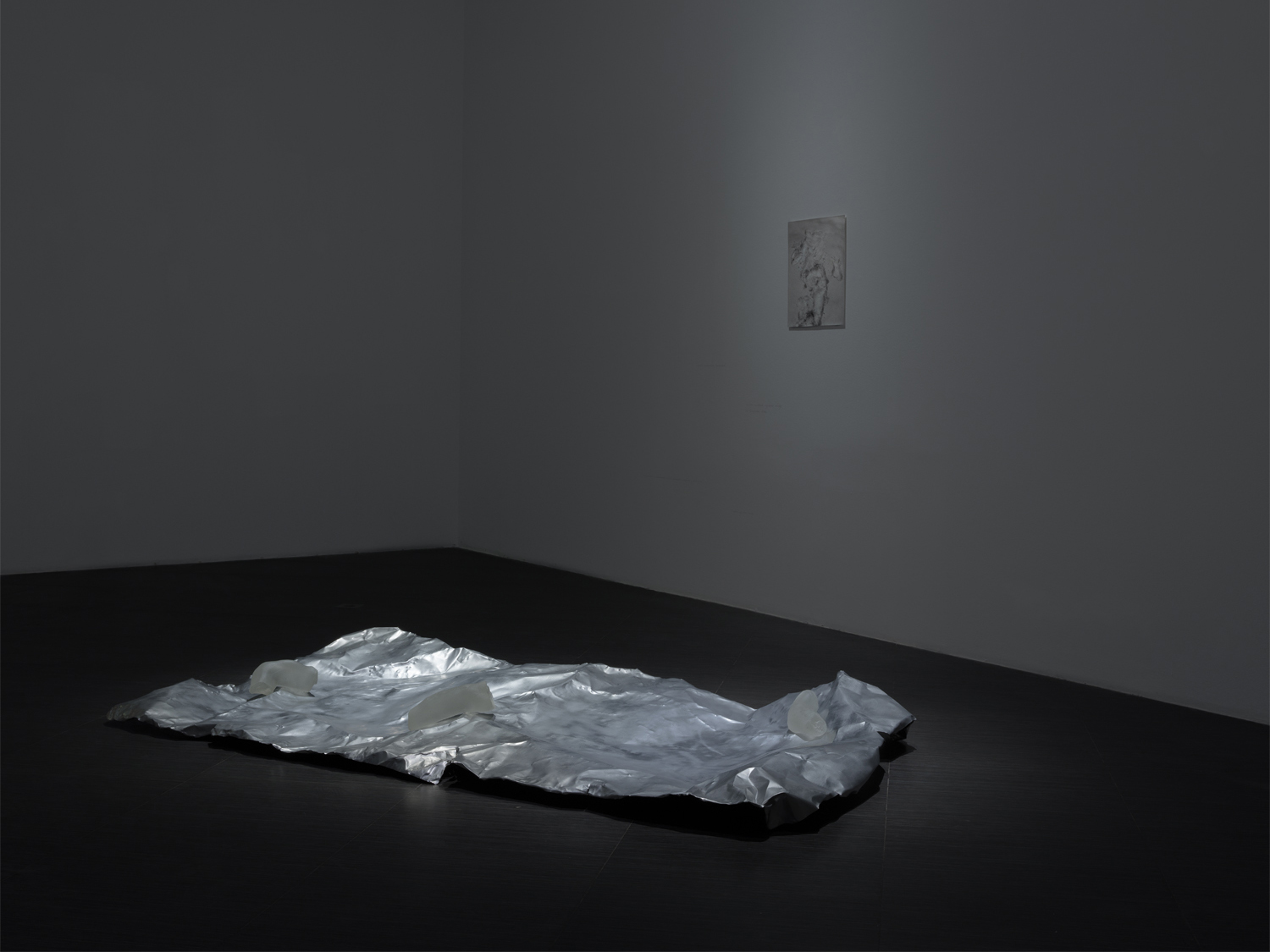
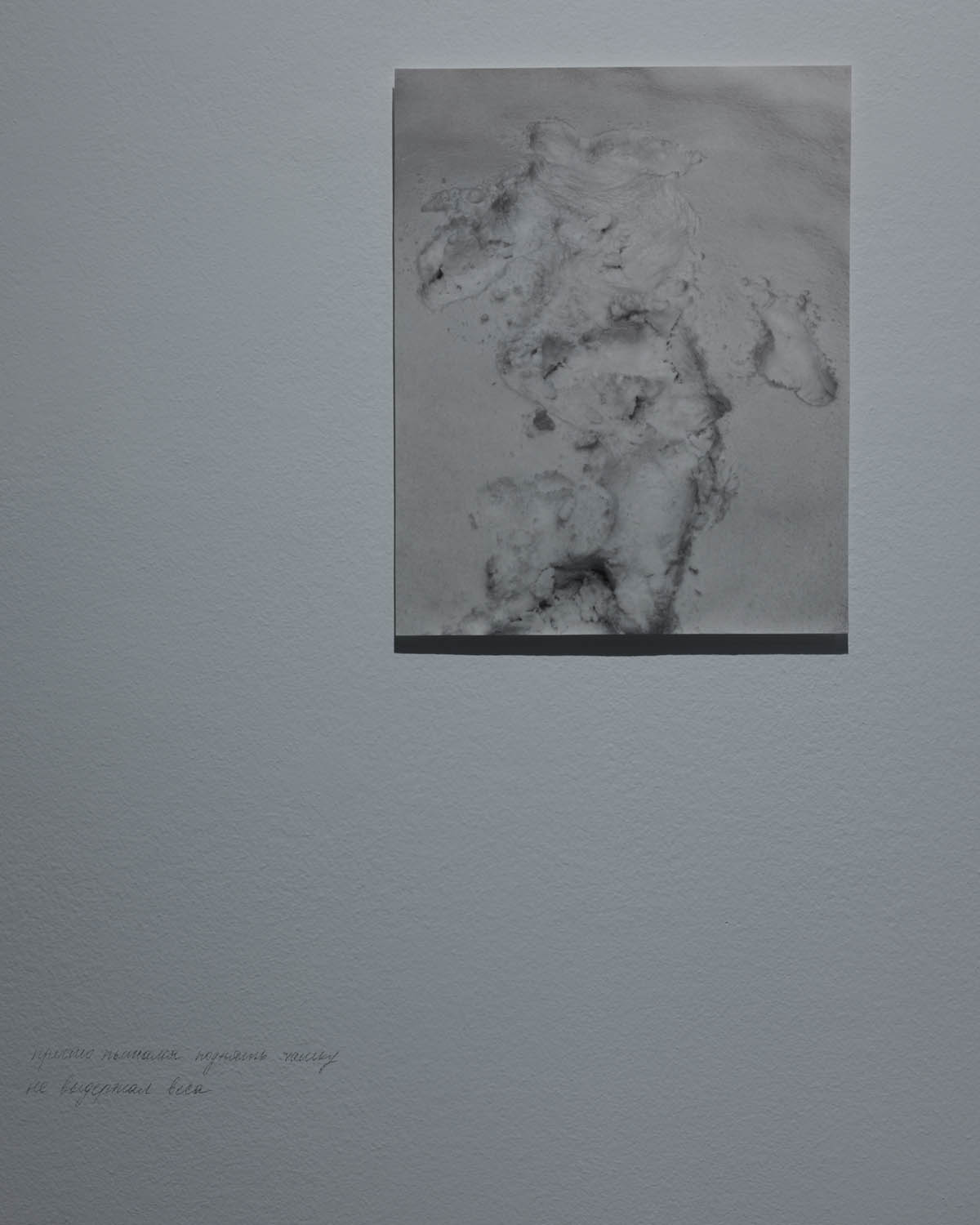
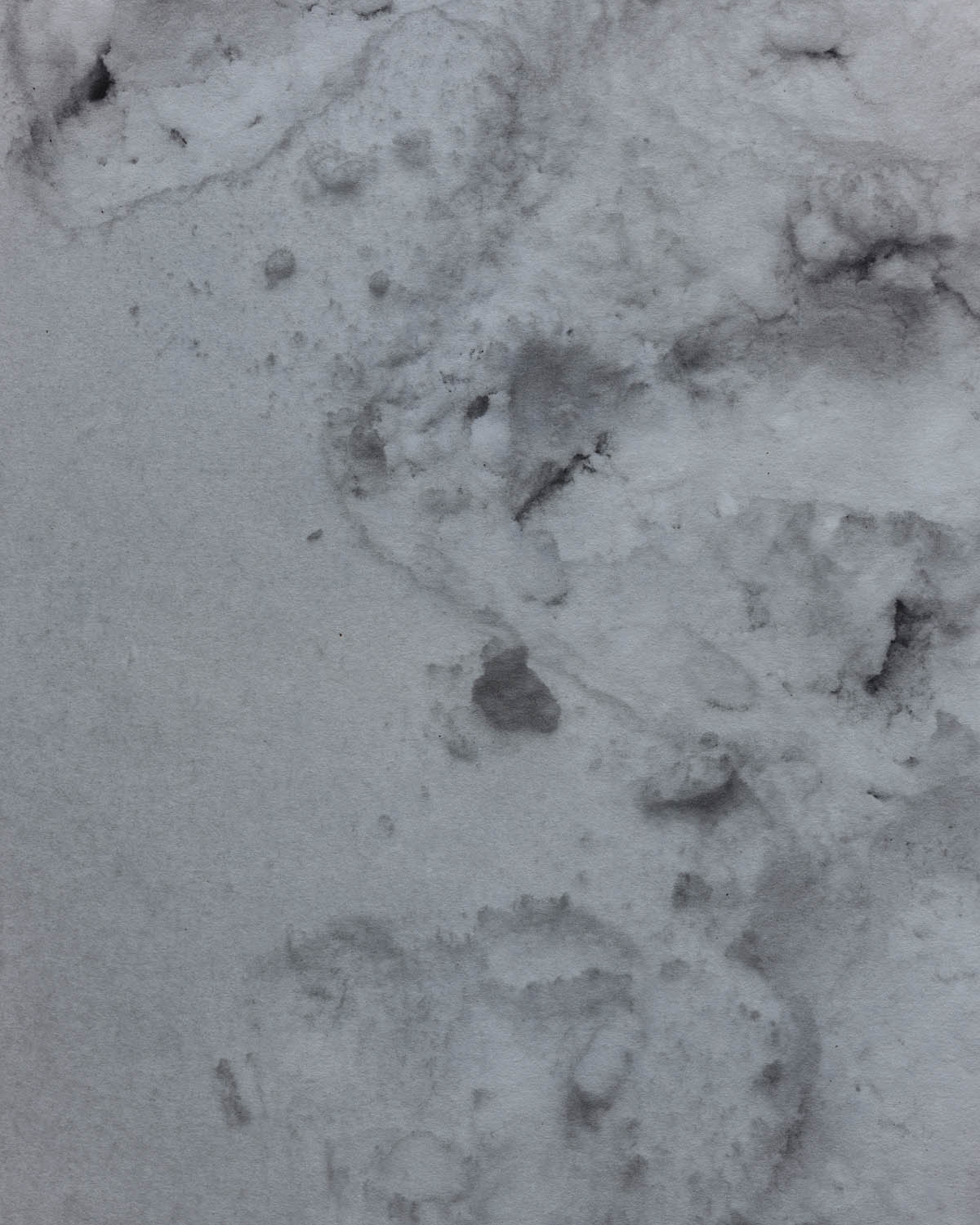
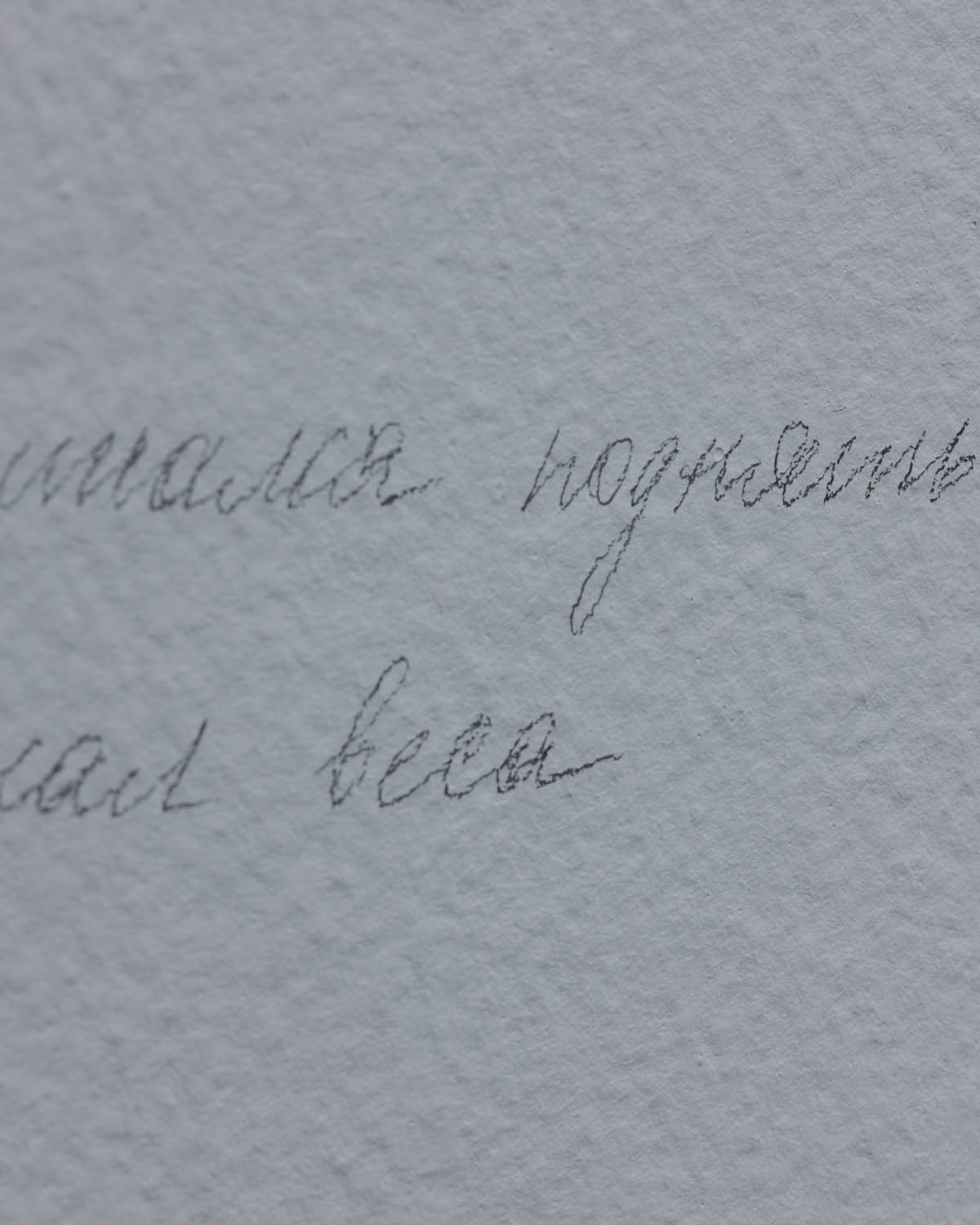
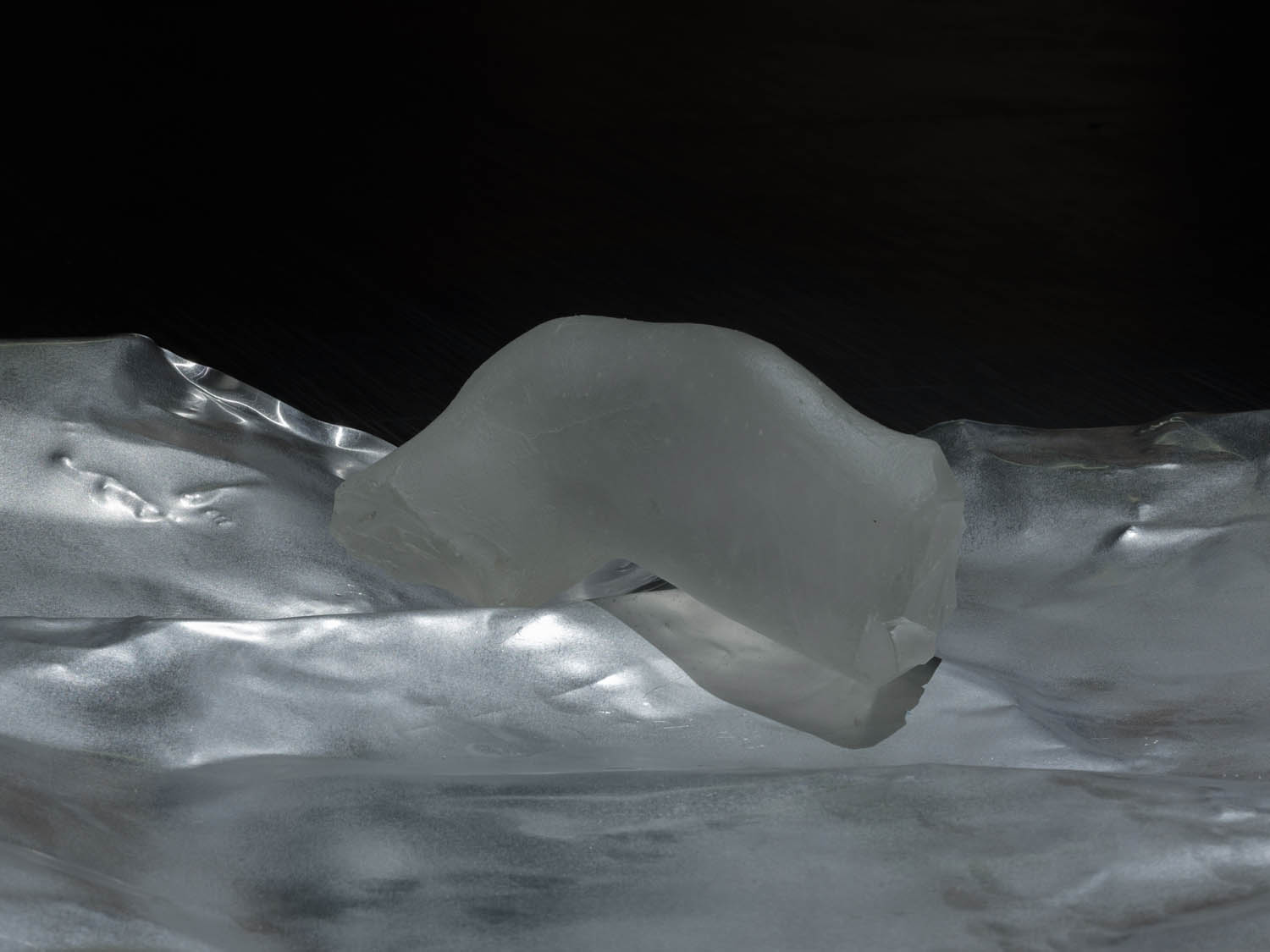
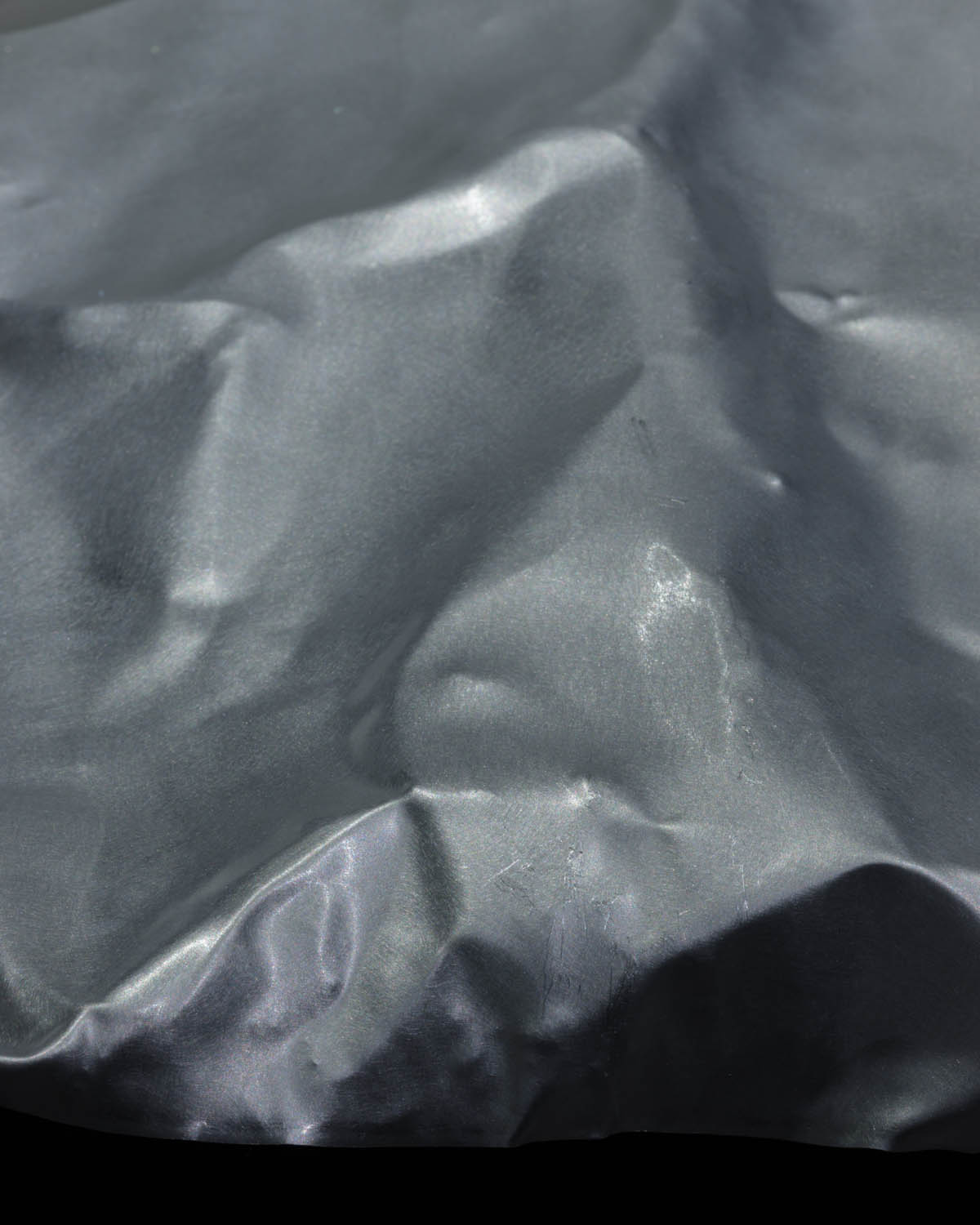
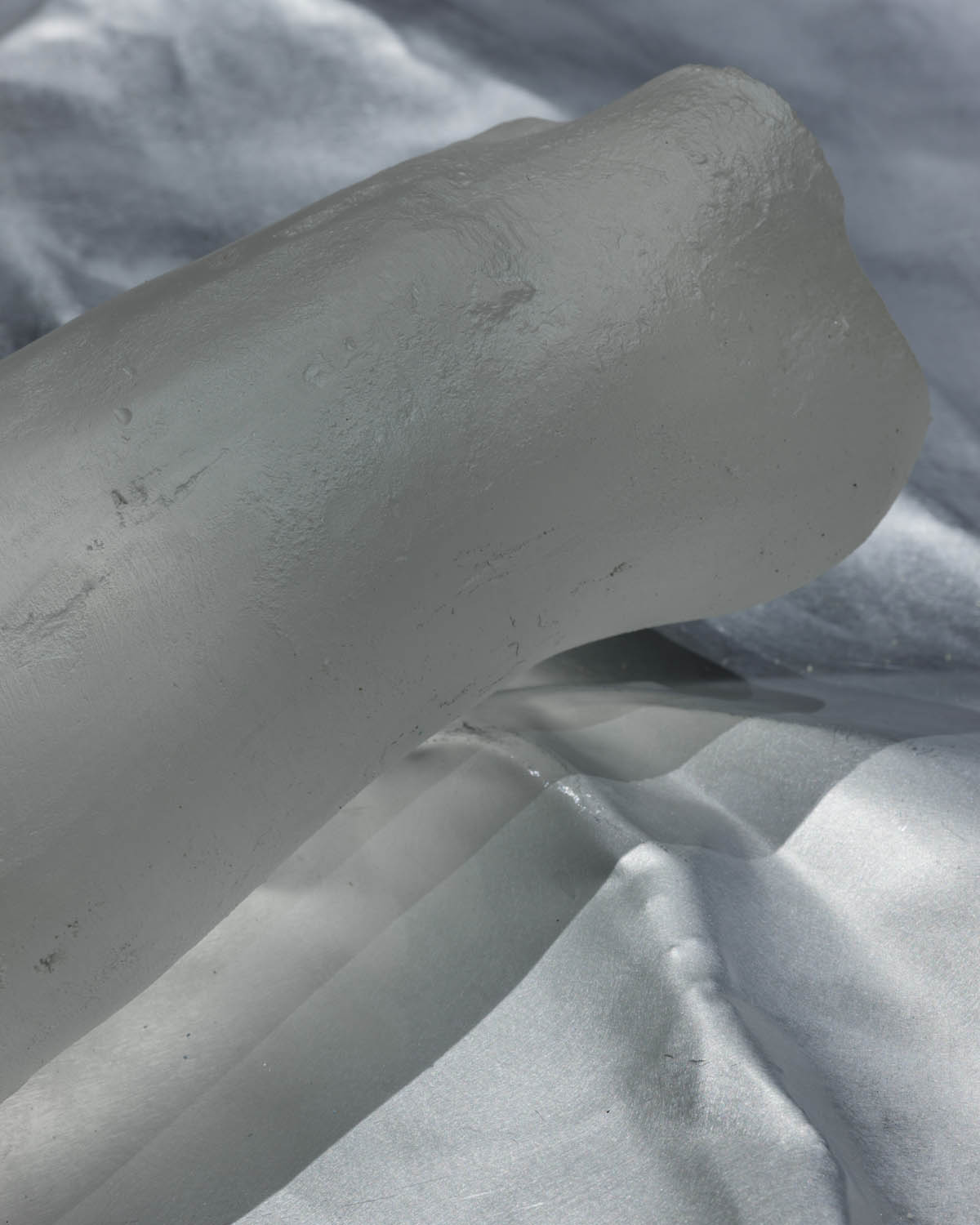
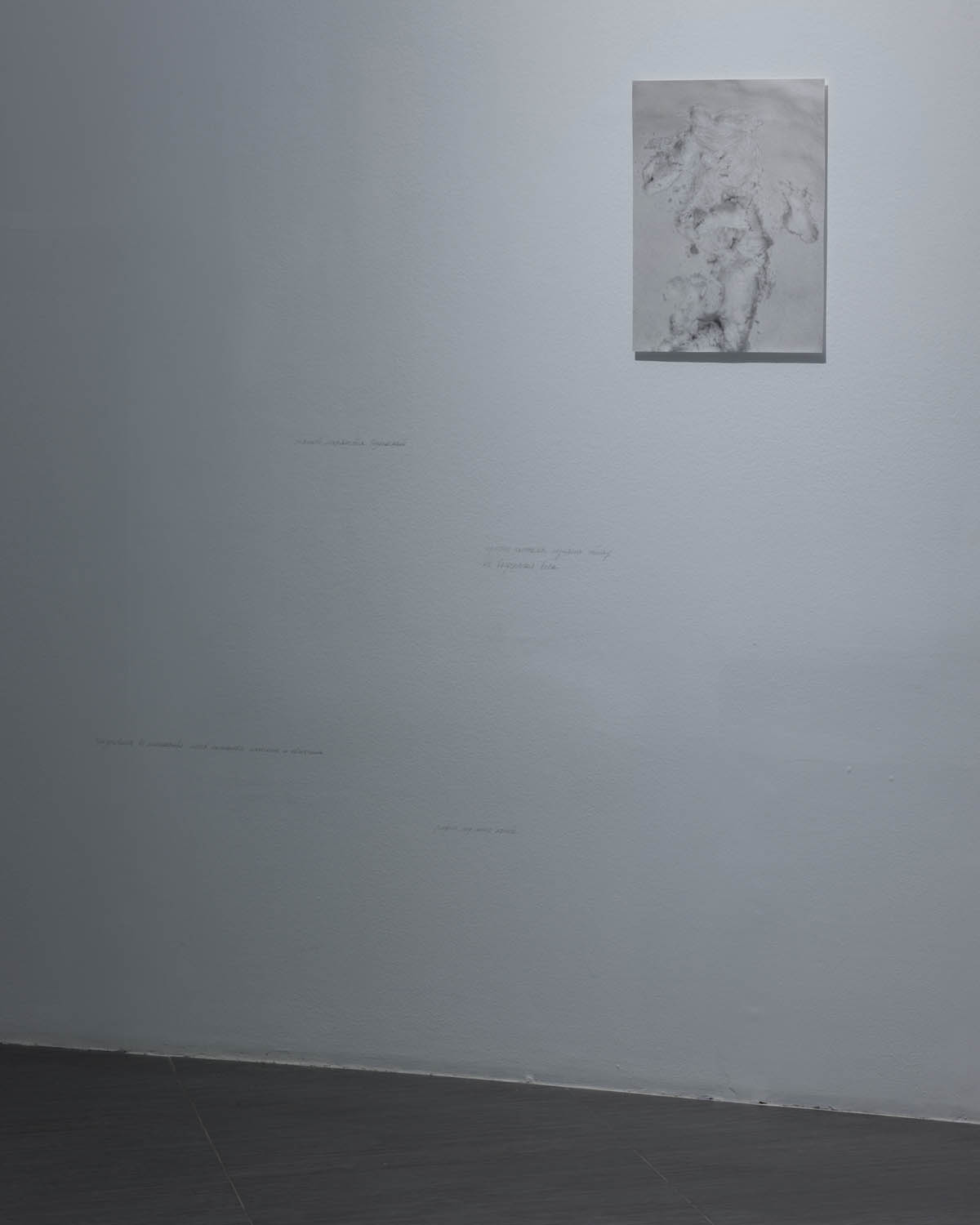
Slow Water is First to Harden
Glass, aluminum, hand-print, graphite, 2021
The project is related to Catherine Malabou’s notion of plasticity, which she defines as not only transformation and adaptability but also the potential for resistance and the obliteration of previous structures, making it particularly relevant in understanding how bodies physically and psychologically adapt to trauma. Here, plasticity becomes a metaphor and a literal mechanism, reflecting the interplay between vulnerability and resilience.
These plasticity properties combine to appeal to the experience of people with osteogenesis imperfecta, a genetically determined collagen deficiency that makes bones prone to severe injury from any careless movement. Faced with a constant threat and retaining plasticity become for them a daily routine and survival practice. As a result of fractures and the implantation of metal pins in the bones, their bodies are transformed, changing their shape, losing their original capabilities, or gaining new mobility and resilience.
The installation invites the viewer to encounter this experience and consider it as a metaphor for a broader condition of ongoing vulnerability, in which survival requires continuous shifting, recalibration, and inner resistance. Abstract at first, it has a documentary nature. The key element, the glass sculptures, are exact casts of the body parts of people with osteogenesis imperfecta. Their shape and texture with traces of impact on the skin (glass surface) retain the results of internal transformations that have occurred. The impacts themselves and the events preceding them remain invisible to the viewer. Communication with them is made through photographs and fragments of phrases that record past events or feelings of the future.
This project was made in collaboration with the nonprofit charitable organization 'Hrupkie Ludi' helping people with osteogenesis imperfecta.
These plasticity properties combine to appeal to the experience of people with osteogenesis imperfecta, a genetically determined collagen deficiency that makes bones prone to severe injury from any careless movement. Faced with a constant threat and retaining plasticity become for them a daily routine and survival practice. As a result of fractures and the implantation of metal pins in the bones, their bodies are transformed, changing their shape, losing their original capabilities, or gaining new mobility and resilience.
The installation invites the viewer to encounter this experience and consider it as a metaphor for a broader condition of ongoing vulnerability, in which survival requires continuous shifting, recalibration, and inner resistance. Abstract at first, it has a documentary nature. The key element, the glass sculptures, are exact casts of the body parts of people with osteogenesis imperfecta. Their shape and texture with traces of impact on the skin (glass surface) retain the results of internal transformations that have occurred. The impacts themselves and the events preceding them remain invisible to the viewer. Communication with them is made through photographs and fragments of phrases that record past events or feelings of the future.
This project was made in collaboration with the nonprofit charitable organization 'Hrupkie Ludi' helping people with osteogenesis imperfecta.
The project is related to Catherine Malabou’s notion of plasticity, which she defines as not only transformation and adaptability but also the potential for resistance and the obliteration of previous structures, making it particularly relevant in understanding how bodies physically and psychologically adapt to trauma. Here, plasticity becomes a metaphor and a literal mechanism, reflecting the interplay between vulnerability and resilience.
These plasticity properties combine to appeal to the experience of people with osteogenesis imperfecta, a genetically determined collagen deficiency that makes bones prone to severe injury from any careless movement. Faced with a constant threat and retaining plasticity become for them a daily routine and survival practice. As a result of fractures and the implantation of metal pins in the bones, their bodies are transformed, changing their shape, losing their original capabilities, or gaining new mobility and resilience.
The installation invites the viewer to encounter this experience and consider it as a metaphor for a broader condition of ongoing vulnerability, in which survival requires continuous shifting, recalibration, and inner resistance. Abstract at first, it has a documentary nature. The key element, the glass sculptures, are exact casts of the body parts of people with osteogenesis imperfecta. Their shape and texture with traces of impact on the skin (glass surface) retain the results of internal transformations that have occurred. The impacts themselves and the events preceding them remain invisible to the viewer. Communication with them is made through photographs and fragments of phrases that record past events or feelings of the future.
This project was made in collaboration with the nonprofit charitable organization 'Hrupkie Ludi' helping people with osteogenesis imperfecta.
These plasticity properties combine to appeal to the experience of people with osteogenesis imperfecta, a genetically determined collagen deficiency that makes bones prone to severe injury from any careless movement. Faced with a constant threat and retaining plasticity become for them a daily routine and survival practice. As a result of fractures and the implantation of metal pins in the bones, their bodies are transformed, changing their shape, losing their original capabilities, or gaining new mobility and resilience.
The installation invites the viewer to encounter this experience and consider it as a metaphor for a broader condition of ongoing vulnerability, in which survival requires continuous shifting, recalibration, and inner resistance. Abstract at first, it has a documentary nature. The key element, the glass sculptures, are exact casts of the body parts of people with osteogenesis imperfecta. Their shape and texture with traces of impact on the skin (glass surface) retain the results of internal transformations that have occurred. The impacts themselves and the events preceding them remain invisible to the viewer. Communication with them is made through photographs and fragments of phrases that record past events or feelings of the future.
This project was made in collaboration with the nonprofit charitable organization 'Hrupkie Ludi' helping people with osteogenesis imperfecta.








